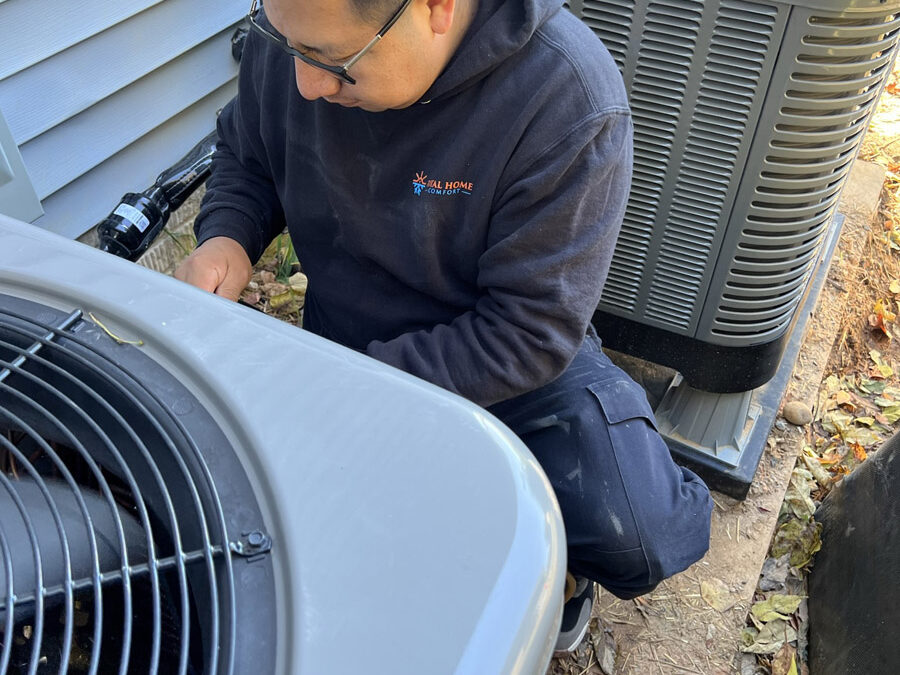When we think about air pollution, images of car exhaust, smog-filled skies, and industrial emissions often come to mind. However, air pollution isn’t just an outdoor issue; it can be a significant problem inside your home as well. In fact, the air inside your home can sometimes be more polluted than the air outside. For residents of Maryland, ensuring total home comfort involves recognizing and addressing the various indoor air pollutants that can threaten your family’s health.
The Hidden Dangers of Indoor Air Pollutants
Indoor air pollutants come from various sources and can cause a range of health problems, particularly for those with respiratory conditions, allergies, or compromised immune systems. Understanding these pollutants and taking steps to mitigate their presence is crucial for maintaining a healthy living environment.
1. Mold and Pollen: Seasonal Allergens That Linger Indoors
Mold and pollen are common allergens that can significantly affect your indoor air quality, particularly during the spring and fall when these allergens are most prevalent. Mold thrives in damp, dark environments, such as basements, bathrooms, and under sinks. Even small amounts of moisture can lead to mold growth, releasing spores into the air that can cause respiratory problems, allergic reactions, and even asthma attacks.
Pollen, on the other hand, can easily enter your home through open windows, doors, or on your clothing. Once inside, it can settle on surfaces and remain in the air, triggering symptoms like sneezing, coughing, and itchy eyes. Using air purifiers and maintaining proper humidity levels can help reduce the presence of these allergens in your home.
2. Tobacco Smoke: A Lingering Health Hazard
Tobacco smoke is one of the most dangerous indoor air pollutants, and its effects can linger long after a cigarette has been extinguished. The particles and chemicals in tobacco smoke can settle on furniture, carpets, and walls, where they continue to release harmful substances into the air. Inhaling second-hand smoke, even at low levels, can cause severe lung problems, including chronic obstructive pulmonary disease (COPD), heart disease, and lung cancer.
For Maryland homeowners, the best way to protect your indoor air quality from tobacco smoke is to ensure that no one smokes inside your home. If you or a family member smokes, doing so outdoors and away from windows and doors can help minimize exposure to these harmful pollutants.
3. Household Products: Unexpected Sources of Pollution
Many household products, including cleaning supplies, pesticides, and air fresheners, can release volatile organic compounds (VOCs) into the air. These compounds can cause a variety of health problems, from eye and throat irritation to more severe issues like headaches, dizziness, and even damage to the liver, kidneys, or central nervous system.
To reduce exposure to VOCs, opt for natural or organic cleaning products, avoid using aerosol sprays, and ensure proper ventilation when using any chemicals inside your home. Additionally, store these products safely and out of reach of children and pets to prevent accidental exposure.
4. Carbon Monoxide: The Silent Killer
Carbon monoxide (CO) is an odorless, colorless gas that is produced when fuels like gas, oil, or wood are burned. Common sources include furnaces, gas stoves, fireplaces, and water heaters. Because it is impossible to detect without a specialized alarm, carbon monoxide is often referred to as the “silent killer.” Inhaling CO can lead to serious health issues, including dizziness, confusion, unconsciousness, and even death.
Installing carbon monoxide detectors on every level of your home and near sleeping areas is essential for protecting your family from this deadly gas. Additionally, regular maintenance of heating systems and ensuring proper ventilation in areas where combustion occurs can help prevent CO buildup.
5. Asbestos: A Legacy of Older Homes
Asbestos, once widely used in building materials for its fire-resistant properties, is now known to be highly dangerous when its fibers are inhaled. Homes built before the 1980s are more likely to contain asbestos in insulation, floor tiles, and other materials. Over time, these materials can deteriorate, releasing asbestos fibers into the air.
If you suspect that your Maryland home may contain asbestos, it’s crucial to hire a professional to assess the situation. Disturbing asbestos-containing materials without proper precautions can release a significant amount of fibers into the air, posing a serious health risk.
Taking Action for a Healthier Home
Ensuring Total home comfort in Maryland means more than just adjusting your thermostat or sealing drafts; it requires vigilance in identifying and addressing indoor air pollutants. By being aware of the potential dangers and taking proactive steps to reduce them, you can create a safer, healthier environment for your family.
From using air purifiers to installing carbon monoxide detectors, every effort you make contributes to better indoor air quality. Remember, the air you breathe inside your home is just as important—if not more so—than the air outside. Make your home a haven of clean, safe air, and enjoy the peace of mind that comes with knowing you’re protecting your loved ones from hidden dangers.

